In the army of each state, namely in the ground forces there is a certain amount of armored vehicles. In view of the fact that guerrilla warfare was carried out mainly with the widespread use of mines in the Republic of South Africa, to this day special wheeled armored vehicles MRAP are used in this country, which are characterized by high mine protection. However, the intended use of such equipment is limited only by the transportation of personnel and military command in the conditions of battle or in the event of a high terrorist threat. To destroy a firmly fortified enemy object or moving target, special military equipment is required. There is also a tank in the Republic of South Africa (South Africa). The armed forces of this country, according to military experts, have a military unit, which is listed as Olifant in the technical documentation. Today it is in service with the National Defense Forces of the Republic of South Africa. Information on the history of creation, design, and performance characteristics of the South African Elephant tank is contained in this article.
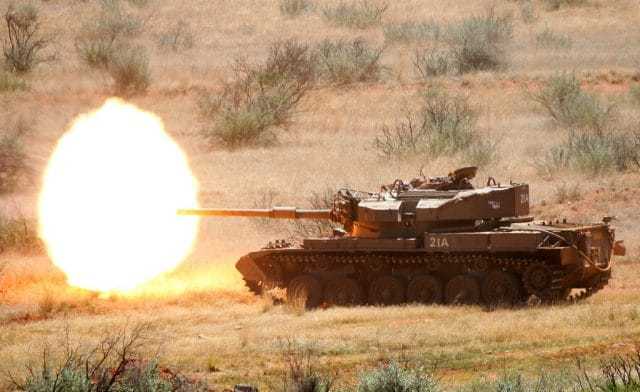
Acquaintance with army equipment
Olifant (translated from English. - "Elephant") is the South African main battle tank. According to experts, it became a modification of the British Centurion tank. The work was carried out by Lyttelton Engineering Works, which specializes in the production of artillery and small arms. This company has become the main manufacturer of Olifant. The English model of the tank was repeatedly modernized. The result of such work was the tanks Mk.1A, Mk.1B and Mk.2, more about which later.
A bit of history
Since 1953, the Republic of South Africa has been armed with 200 British Centurion tanks (a photo of the tank is presented below). After 9 years, 100 of them were bought by Switzerland.
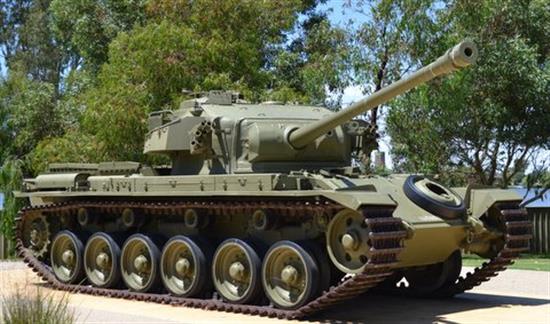
The republic’s government was forced to take this step in order to obtain funds for the acquisition of Mirage fighter aircraft. The Swiss side of the existing tanks "Centurion" independently chose a hundred. Thus, the tank fleet was reduced by half. The government of South Africa later planned to make up for it. However, these plans were not destined to come true, since in 1964 the United Nations imposed very severe sanctions on the young republic, which affected the supply of weapons to South Africa. This measure was due to the fact that racial segregation was practiced in the Republic of South Africa. Of course, under the pressure of sanctions, the country's armored forces could end. Nevertheless, even in such difficult conditions, South African troops were supplied with all the necessary spare parts for the repair of armored vehicles. Soon, the military command was faced with another problem. The fact is that at that time the country's army had only Meteor Rolls-Royse engines. The disadvantage of this power unit was that in high temperature conditions it overheated very quickly. This installation needed to be replaced, which was practically impossible to do under the conditions of sanctions. However, the government of the Republic of South Africa found a way out of this situation - in 1964 the ARMSCOR arms corporation was created, which was charged with the responsibility of conducting international purchases.
Start of design
In 1976, as part of the Centurion program for the modernization of British armored vehicles, South African designers began work on the Olifant Mk.1A tank. As a result of modernization work in this armored vehicle, a number of changes were made. As weapons, the Elephant tank was equipped with a 105 mm L7A1 cannon. It used to be 83mm. In addition, the new gun was equipped with a laser rangefinder and ballistic computer.
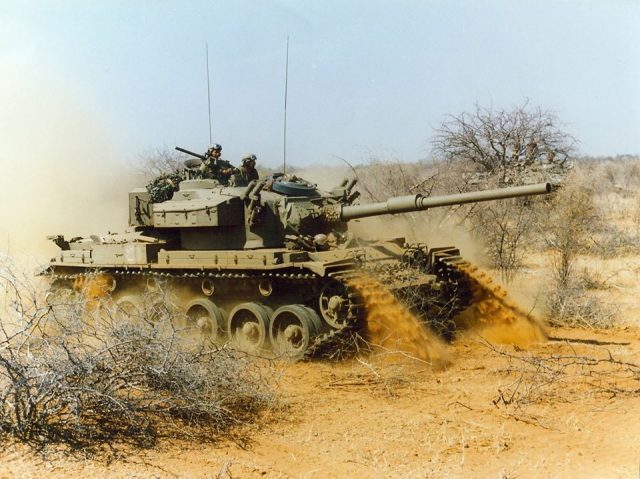
Also, the Elephant Mk.1A tank was equipped with 81-mm smoke grenade launchers, illuminated night sight for the commander, periscope observation devices. The driver and gunner could use them. The image that these devices displayed, according to experts, was the best, since they provided for electron-optical amplification. Given the conditions in which it was planned to operate the tank, the developers had to upgrade the electronic equipment. For example, special tubes became the place for backup antennas, whose task is to prevent the bending of antennas in dense vegetation. Each armored vehicle was equipped with an individual tank in which drinking water was transported. There was also a hob and the necessary set of tools. Since the Angolan FAPLA had to deal mainly with armored personnel carriers that were easily destroyed by anti-aircraft guns, they decided not to change the armor protection in the tank. Due to the fact that in conditions with dense vegetation, side screens often clung to bushes, the crew of the military unit simply dismantled them.
About powertrains
The changes affected the tank engine. Allegedly for agricultural purposes, ARMSCOR acquired several American diesel engines from GM. However, as it turned out, these powertrains were good only in the cold European climate. At the same time, South Africa was in a hopeless situation and still had to purchase these diesels. In addition, ARMSCOR acquired three more V12 engines manufactured by Continental. These installations were equipped with American M-46 and M-47 tanks. After minor design improvements, the V12 was also adapted to an English armored car. According to the test results, it turned out that these engines with a very huge fuel consumption, which negatively affected the power reserve - it was reduced by 40 km. Instead of the British Meteor engines, it was decided to put American AVDS-1750 diesel power units with automatic hydromechanical transmission and 900 horsepower on the new tanks. The capacity of the tanks was brought to 1280 liters. Previously, this figure was much lower and amounted to only 458 liters. The increased volume of fuel tanks allowed the South African command to offload logistics. Since these combat vehicles must operate on a territory with a long length, much attention was paid to how maintainable the crew forces were. According to experts, the first wave of modernization affected over 220 Centurion tanks.
The second stage of modernization
In 1990, the Elephant Mk.1A tank began to be redone. The result of design work was the Olifant Mk.B1 model. In the new version, it was decided to leave the previous armament, namely the 105 mm L7A1 gun. Nevertheless, the Elephant Mk.B1 tank differs from the previous model in that the main armament was supplemented with a heat-insulating fiberglass casing. The gunner had a periscope sight with a stabilized sight and a laser rangefinder. The tower of the tank to aim the main gun on the target was developed by means of electric drives. The fire control system was supplemented with a new ballistic computer. Instead of a double-leaf hatch for the loader, a single-leaf was used, which could only open forward. Previously, the ammunition and property of the crew members of the Elephant Mk.1A tank were transported in a stern basket. In the new version, the developers for this purpose have provided a larger special compartment. Its designers included a new compartment in the general contours of the tank tower, which South African tankers used as a bathtub. The sides and the roof of the tower were mounted with flat mounted modules. This measure was taken to increase the armor protection of a combat vehicle. According to experts, installing additional armor, the developer took into account the balancing of the tower. As a result, if we compare the Elephant Mk.B1 tank with the British Centurion, then in South Africa the balancing is better, so it takes less effort to make a U-turn.
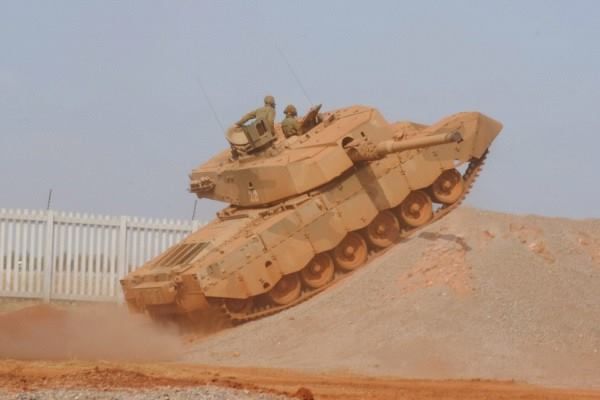
About the running gear
Since it was planned to use armored vehicles in rocky terrain, the developers paid a lot of attention to the type of suspension. Tank "Elephant Mk.B1", according to military experts, with improved cross-country ability, especially at high speed. In this model, they decided to use a torsion bar suspension for the road wheels. The chassis was covered with newly designed steel screens. In order to make it technically easier to maintain, the sheets, in contrast to the original screens in Centurion, were made smaller. In addition, the sections were placed on special hinges, so that, if necessary, the sheets could be folded up. All nodes of the suspension were equipped with hydraulic shock absorbers, and 1, 2, 5 and 6 - with hydraulic shock absorbers.
What else was converted in the tank?
The changes also affected the management department. In order to make it more ergonomic, instead of the double-wing hatch used by the driver, a sliding monolithic hatch was installed in the tank, the photo of which is posted in the article. Instead of periscope instruments, the location of which was previously a double-leaf hatch, three-angle wide-angle periscopes were installed. As an auxiliary weapon in this version of the armored vehicles, three 7.62-mm Browning machine guns are used. One of them is paired with the main gun and is located on the left, two - above the hatches of the crew commander and loader.
About Transmission
The engine of the tank is represented by a more powerful diesel V-12. The boosted version has an inherent power of 950 horsepower, unforced - 750 hp. Despite the fact that the mass of the tank was increased from 56 to 58 tons, its specific power was 16.2 liters. from. for 1 ton. In the previous version of the tank, namely the Elephant Mk.1A, this figure was 13.4 tons. Instead of an American-made transmission, the tank uses an automatic South African AMTRA III with four forward speeds and two rear. As a result, on the highway, the “Elephant” could move at a speed of no more than 58 km / h. Due to the fact that Elephant Mk.V1 was equipped with a new power unit, the length of the machine increased by 200 mm. To protect this army equipment from enemy mines, the developer provided the tank body with a spaced-apart armored bottom. Between the sheet armor are components of the torsion bar suspension.
Model Mk.2
In 2003, the British company BAF Systems began working on a contract worth $ 27.3 million to upgrade Olifant Mk.1B. British engineers were provided with 26 tanks. According to weapons experts, over the past decade, the South African concern, this contract has become the largest. One of the South African subsidiaries of BAE Systems was appointed as the contractor. He, in turn, concluded several contracts with South African companies, namely IST Gynamics, Defense Reutech Logistik and Delkon for the manufacture of equipment and individual elements of military armored vehicles. The essence of the modernization was to equip the tank with a new turbo-heater and an intercooler for the GE AVDS-1790 diesel engine, the power of which amounted to 1040 liters. from. The power unit was developed by the South African company Delkon. In addition, the customer wished that the new tank had an improved LMS (fire control system) and improved tower drives. This, in turn, would make it possible to aim a gun and shoot at a target during a battle. Reunert engineers worked on these elements. Such a system provides for a ballistic computer and a stabilized commander’s observation platform with a thermal imager and sight on it.

In total, 13 combat units were modernized. To deliver these armored vehicles began at the end of 2006. Modernization work was carried out using components and developments used in the TTD tank. According to experts, unlike previous models, this option has more improved protection. This is explained by the fact that active armor modules were used for Mk.2. If during the battle they were damaged, the crew could quickly make a replacement. This model of a tank with a wedge-shaped tower, like the German Leopard 2A6. There are four people in the crew, namely the commander, gunner, loader and driver. Armored vehicles are driven by an Israeli-made Continental diesel engine that can accelerate the tank to 1,040 horsepower. Olifant Mk.2 decided to use the chassis from the previous model.
About weapons
As the main weapon in this model, a fully stabilized 105-mm rifled gun is used. A loading automatic machine is not provided in the tank. Therefore, the crew must manually reload the gun. For storage of ammunition there is a special niche in the tower, which is separated from the fighting compartment by means of an armored partition. Initially, a 120 mm smoothbore gun was developed for the tank. However, soon the designers decided to use a 105 mm gun. As it later turned out, her power was enough to destroy the enemy tank. The combat kit is designed for 68 shots. Fire control is carried out through an upgraded system. Her tracking of a moving target is automatic. This tank model was equipped with new devices, the task of which is to detect enemy targets. Thanks to the modern gun stabilization system and night-time observing devices, you can destroy a moving object even in the dark. Additional armament is represented by two 7.62-mm machine guns. One of them is paired with the main 105-mm gun. Place the second machine gun over the tank tower.
TTX
This combat transport unit has the following tactical and technical characteristics:
- The Elephant Mk.2 tank weighs 60 tons.
- The power of the power unit is increased to 1,040 liters. from.
- The total length with the gun forward is 983 centimeters, body - 756 cm.
- Width - 342 cm.
- This tank with a clearance of 34.5 cm.
- On a flat surface, the car moves at a speed of 58 km / h.
- Cruising on the highway is 350 kilometers, on rough terrain - 200 km.
- Armored vehicles with a specific power of 17.3 liters. from. per ton.
- "Elephant Mk.2" is able to overcome 98-centimeter walls, 3.5-meter ditches.
What do military experts think about the tank
According to experts, the "Elephant" is a clear example of how you can take advantage of the combat capabilities of already obsolete armored vehicles. After evaluating the tactical and technical characteristics of this model, many experts agreed that they are not able to provide full resistance to most modern tanks. However, with the improvements made, he is in a better position than tanks that are not adapted for use in Africa. In 1987, South African armored vehicles in a confrontation with Soviet T-62 tanks proved to be pretty good.
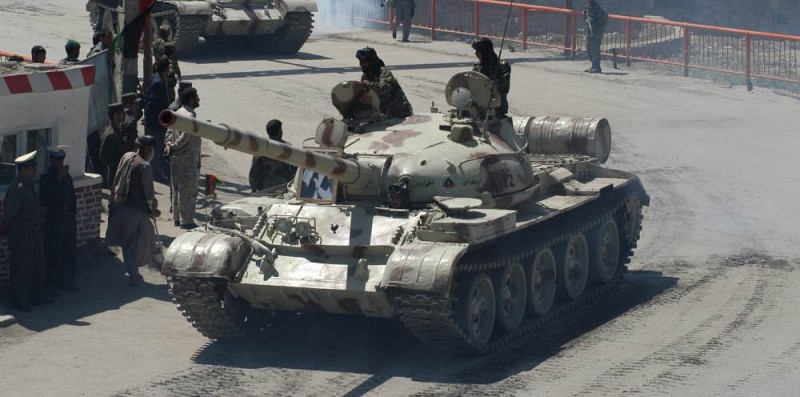
As experts are convinced, if you compare the "Elephant" with the T-62, then the armor protection and the main guns in South African cars are slightly better. In Soviet armored vehicles, the most vulnerable spot was the frontal projection. A South African tank could be destroyed from a distance of two kilometers if a shell from a 115-mm Soviet gun fell on board. Also, "Elephant" could be knocked out by means of a manual anti-tank grenade launcher, namely RPG-7. Thanks to the modernized fire control system, a shell from a 2-kilometer distance hit the target 500 x 500 mm. According to experts, such an indicator can be considered ideal only for the open flat terrain, as in South Africa. If these tanks were to be fought in Angola, which is characterized by dense thickets, then such accuracy would be unsatisfactory, even from a 100-meter distance.
Finally
According to experts, the armed forces of the Republic of South Africa have all three versions of the Elephant tank. The armored fleet is represented by 172 units. Despite the fact that this equipment is considered the main one and is used today, the military command of South Africa plans to replace it in the near future. The republic will purchase about 96 new units. An exhibition of military equipment and armaments AAD 2010 was held in Cape Town in 2010. At it, the command of the National Defense Forces was offered the Ukrainian-made Bulat tanks and the German Leopard 2A4. There is no specific information about what the converted British Centurion will replace. Presumably, this will be a foreign-made tank. According to experts, most likely Challenger 2E or Leclerc Tropik.